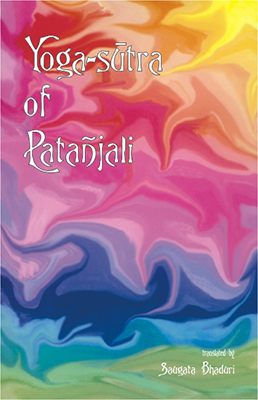

Rasa in Aesthetics (...
Rasa in Aesthetics (PB)
An Application of Rasa Theory to Modern Western Literature by: Priyadarshi PatnaikDr. Patnaik elucidates the fundamentals of the rasa theory and applies the canons of this theory to various modern Western literary works, Chinese love lyrics and the Japanese haiku poems. Its historical development and recognition are discussed.
Original price was: ₹590.00.₹531.00Current price is: ₹531.00.
ISBN: 9788124607107
Year Of Publication: 2013
Edition: 3rd
Pages : xvi, 280
Bibliographic Details : Bibliography; Glossary; Index
Language : English
Binding : Paperback
Publisher: D.K. Printworld Pvt. Ltd.
Size: 23 cm.
Weight: 500
The Indian tradition of criticism is over two millennia old. And its rasa theory has, from the beginning, essentially influenced authors, connoisseurs and art critics alike. First expounded sometime between the 1st century bc and the fourth century AD in the eminent aesthetician, Bharata’s Natya Shastra, rasa theory deals with the ‘emotive content’ of a work of art — how it is depicted, inferred and transmitted. Dr. Patnaik’s book is a unique effort that demonstrates, with diverse examples, the universality of this ancient theory and its applicability to modern Western classics. Elucidating afresh the concept of rasa and all its nine primary kinds largely on the basis of Natya Shastra of Bharata and the commentaries of the tenth-century aesthetician, Abhinavagupta, the book investigates the validity of rasa theory as an aesthetic, more specifically, a literary theory, and how its canons are applicable to modern Western literature as well as Chinese love lyrics and Japanese haiku poems. Dr. Patnaik’s transcultural exploration, thus, covers all major genres of literature — poetry, drama and fiction; and also major writers — Lawrence, Mayakovsky, Kafka, Camus, Conrad, Hemingway, Faulkner, Marquez, Eliot, Hesse, O’Neill, Ionesco, Beckett, Lorca, Neruda and several others. In emphasizing the universal validity of the rasa theory, the author considers certain modern problems relevant to text, meaning and readers’/audiences’ response as well. Very few are the examples of applied rasa theory even in Sanskrit and other Indian literatures, leave alone its application to Western creative writing. This book, with its bold framework and lucid style, should, therefore, fascinate the scholars of Indology, Indian aesthetics and, above all, comparative literary criticism.
Foreword
Preface
Introduction
Is the Rasa Theory Relevant?
Rasa Theory Among Other Indian Theories
What is Rasa Theory About?
Causes for its Decline
1. Rasa
The Word Rasa: A Short Introduction
Rasa: A Chequered Career
Rasa in the Upanishads
Rasa in Natya Shastra
What is Rasa Made of?
Sthayibhavas — Vyabhicaribhavas — Anubhavas — Vibhavas
Rasa and Bhava: Which One Came First?
The World of Stimulus and Response
Then What is the Nature of Rasa
The Sympathetic Perceiver
2. The Rasas and their Relationship
The Eight Rasas
Shanta Rasa
3. Shringara Rasa
Love-in-Union
The Permanent Emotion in Shringara — The Causes of Shringara — The Effects and Consequences of Shringara — Violence, Terror and Love — Inanimate Objects and Love — Union in Love
Deviant Relations, Incomplete Relations and Other Problems
Love-in-Separation
Effects and Consequences of Separation — Separation and Longing — Hope and Despair — The Problem of Interpretation — Love Between Friends — One-Sided Love — The Problems of View-Point — More than One Rasas
4. Hasya Rasa
One of the Oldest Emotions
Disorder, Cruelty and Laughter
The Nature of the Disorder
Cruelty Beyond the Laugh
Satire and Hasya Rasa
Causes of Laughter
The Need for Distancing
High and Low Comedy
The Comedy of the Grotesque
Hasya vs Shringara
5. Karuna Rasa
The Causes of Karuna
Who is the Aggressor?
Tragedy and Karuna Rasa
Karuna vs. Vipralambha Shringara
Subjectivity
Pity
Bibhatsa vs. Karuna
Alienation
Karuna and the Other Rasas
Hope and Karuna Rasa
The States that Accompany Karuna
How can Karuna be Relished?
6. Raudra Rasa
The Stable and Accompanying States In Raudra
Anger Through Words
Injustice and Raudra
The Accompanying States
Raudra and Other Rasas
Raudra and Vira
Raudra And Karuna
Impotent Rage and Suffering
Raudra, The Frenzy and the Grotesque
Fury and Waste
Fury and Disgust as Responses
7. Vira Rasa
The Manifestations of Vira Rasa
Firmness and Patience — Strength — Correct Perception — Dynamic Energy
The Causes of Vira
The Responses of Vira
Determination in the Face of Odds — Humility
Wonder
Weakness — Absence of Confusion
Associated Emotions of Vira
Love, Anger and Vira Rasa
Vira and the Other Rasas
8. Bhayanaka Rasa and Bibhatsa Rasa
Neglected Rasas
Bhayanaka Rasa
Causes — What Causes Fear?
Bibhatsa Rasa
Metamorphosis to the Unknown — Ugly-Distortion — Incomprehension
Metaphysical Disgust
Towards Shanta — The Absurd
Bibhatsa and Hasya
Bibhatsa and Black Comedy
Fear and Disgust
The States that Accompany Fear and Disgust
Relation with Other Rasas
Wonder and Disgust — Vira, Bibhatsa and Bhayanaka — Karuna — Shringara
Problems
9. Adbhuta Rasa
Surprise and Delight
Causes of Adbhuta
Adbhuta Rasa and Love
Wit and Wonder
Surprise and Delight
Which Way does Wonder Move?
Vira, Adbhbuta and Shanta
Adbhuta and Terror
Wonder Beyond Terror
Effects of Adbhuta Rasa
Adbhuta and the Other Rasas
10. Shanta Rasa
The Uniqueness of Shanta
Is Shanta Really a Rasa? — The Stable State in Shanta — Causes of Shanta
What is Really the Sthayibhava of Shanta
Harsha or Laughter — Shoka or Sorrow — Krodha or Anger — Utsaha or Dynamic Energy — Bhaya or Fear — Jugupsa or Disgust — Vismaya or Wonder — Rati or Love — Cause and Effect of Shanta — Accompanying Emotions
Shanta in Meditative Literature
The Seeker of Peace
Shanta and Moksha
11. Conclusion
Bibliography
Glossary
Index











